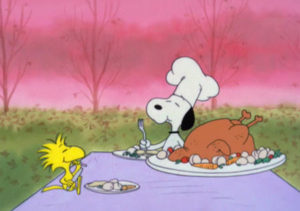by Harry on November 27, 2017
Benjamin Black has one thing in common with Sharon Bolton.
Black (the second of the ‘only counts as British because all Irish people who accomplish impressive things get claimed as British unless, of course, those impressive things involve some sort of successful military or political action against the British’ crime writers) is, in fact, John Banville. He seems to have shifted more or less whole hog from literary fiction to crime-writing under his pseudonym. The main series is about Quirke, a pathologist with a labyrinthine family life, and who seems to be a magnet for murder (Now I think about it I suppose pathologist is a job to avoid if you want to avoid all contact with murder). Christine Falls starts us off in mid-fifties Dublin, which is exactly the way that Henry and Maria sometimes suggest in their posts, and proceed chronologically. They are noir-ish in the extreme – it always seems to be grey and drizzling, and Quirke is depressive and not particularly likeable (his daughter is, but it is hard to see her growing toward a happy fulfilled middle-age, much as he would like that for her). They’re well-plotted, but that’s not the reason to read them – the characters and the mood, and the outlook on the world are what make them so compelling. Black actually has a wry sense of humour, but he chose the pseudonym for a reason: they are dark books. (I haven’t yet read the more recent — books).
starts us off in mid-fifties Dublin, which is exactly the way that Henry and Maria sometimes suggest in their posts, and proceed chronologically. They are noir-ish in the extreme – it always seems to be grey and drizzling, and Quirke is depressive and not particularly likeable (his daughter is, but it is hard to see her growing toward a happy fulfilled middle-age, much as he would like that for her). They’re well-plotted, but that’s not the reason to read them – the characters and the mood, and the outlook on the world are what make them so compelling. Black actually has a wry sense of humour, but he chose the pseudonym for a reason: they are dark books. (I haven’t yet read the more recent — books).
[click to continue…]
by Harry on November 26, 2017
At the APA blog Steven Cahn says:
The term “hidden curriculum” refers to the unstated attitudes that are often communicated to students as a by-product of school life…. [At graduate school]
[One] message is that faculty members are entitled to put their own interests ahead of those of their students. Consider how departments decide graduate course offerings. The procedure is for individual professors to announce the topics of their choice; then that conglomeration becomes the curriculum. The list may be unbalanced or of little use to those preparing for their careers, but such concerns are apt to be viewed as irrelevant. The focus is not on meeting students’ needs but on satisfying faculty desires.
Similarly, in a course ostensibly devoted to a survey of a major field of philosophy, the instructor may decide to distribute chapters of the instructor’s own forthcoming book and ask students to help edit the manuscript. Whether this procedure is the best way to promote understanding of the fundamentals of the announced field is not even an issue.
I think he exaggerates a little: certainly in my department more thought than that is given than he describes to graduate course offerings. But I don’t think he exaggerates a great deal. A piece of evidence: I was struck, in my several years on my university’s curriculum committee (which vets all new course proposals and all proposed course deletions in the university — at least several hundred a year of the former, and a handful of the latter) how often the rationale for proposed undergraduate courses in the humanities and (to a lesser extent) social sciences was something like this:
[click to continue…]
by Chris Bertram on November 26, 2017
by John Q on November 26, 2017
Following a “related stories” link, I found a 2014 piece from Dana Milbank which combines my favorite pet peeve, the Generation Game, with everyone’s favorite fallacy, No True Scotsman. I’m a bit late to the party, but I can’t resist such a tempting target.
Milbank wants to make the case that, unlike the great conciliators of the past and the cool, detached Generation X of which he is a member, Baby Boomers are given to a “scorched earth” conflict-driven style of politics. There’s just one problem. Most of Milbank’s villains (Pelosi, McConnell, Reid) were born before the baby boom, while the hero of his piece, Obama, is, sad to say, a Boomer. No problem, says Milbank, “generational boundaries are inexact”. Applying the No True Boomer test, Pelosi, McConnell, Reid are turned into Boomers, while Obama is promoted into Generation X. In these cases, the shift is only a year or so, but a moment’s thought would have provided Milbank with plenty of examples of scorched-earthers born five years or more outside the Baby Boom (Roger Ailes and Rupert Murdoch at one end, Ted Cruz and Paul Ryan at the other) and compromisers born in the middle of the Boom (Tim Kaine and the leading members of the DLC)
More to the point, the style of politics he’s talking about got its start with the Nixon-Buchanan Southern strategy “tear the country in half, and take the bigger half“. The fact that many of its most prominent practitioners are (mostly male) Boomers follows from the fact that they are currently the right age (roughly 55 to 70 depending on details) to occupy senior leadership in US politics.
by John Holbo on November 26, 2017
Normally I steer clear of Black Friday sordidity, but I’ve been on an art kick here on CT; and, it happens, I need new colored pencils. And the best are Prismacolor. And – lo and behold! – the big box [aw man you missed the sale] is half-price for the next five hours. That’s a good deal if you want to box with shadows in a practical sense. (They aren’t all grey. Just ask Monet.)
by John Holbo on November 25, 2017
by John Holbo on November 24, 2017
by John Holbo on November 24, 2017
by John Holbo on November 23, 2017
If you are like me, you have Abebooks ‘wants’ out there – hopeful lines dragging through the stream of books. Here’s one that nibbled, but it’s still too rich for my blood. It’s As nature shows them : moths and butterflies of the United States, east of the Rocky Mountains : with over 400 photographic illustrations in the text and many transfers of species from life, by Sherman F. Denton (1900). Only $400. (Anyone wants to buy it for me?)
It’s an amazing curiosity in the history of color printing. I would love to see it in person. But for now the Internet Archive will have to do. What makes it so remarkable, you ask?

From the Preface:
The color plates, or Nature Prints, used in the work, are direct transfers from the insects themselves: that is to say, the scales of the wings of the insects are transferred to the paper while the bodies are printed from engravings and afterward colored by hand. The making of such transfers is not original with me, but it took a good deal of experimenting to so perfect the process as to make the transfers, on account of their fidelity to detail and their durability, fit for use as illustrations in such a work. And what magnificent illustrations they are, embodying all the beauty and perfection of the specimens themselves!
As I have had to make over fifty thousand of these transfers for the entire edition, not being able to get any one to help me who would do the world as I desired it done, and as more than half the specimens from which they were made were collected by myself, I having made many trips to different parts of the country for their capture, some idea of the labor in connection with preparing the material for the publication may be obtained.
I’m sure someone can make use of this peculiar mode of auto-iconographic representation for some weird Wittgenstein philosophy of language example.
by Harry on November 21, 2017
I can’t remember how I came across Sharon (SJ) Bolton, but I do know that Sacrifice sat by my bedside a long time before I read it, possibly because it looked like it could genuinely be awful. Her output falls into main two groups: a series about Lacy Flint, a completely screwed up female cop in London (mainly) and several sort-of stand-alones. The first 3 stand-alones are mostly published under the name SJ Bolton, and the blurbs of those make a big deal of her fascination with, and use of, local folklore (which is maybe what kept making me delay reading Sacrifice). Accordingly the crimes have a mystical character – part of the trick is teasing you about whether the crimes have actually been committed by real people or whether there is some element of the supernatural. They are all in rural, closed, settings, and all involve strong female protagonists, and some element of romance. Now, they are not really sequenced, but they do all take place in the same fictional world, and a few characters recur, so you should read Sacrifice and Awakening
sat by my bedside a long time before I read it, possibly because it looked like it could genuinely be awful. Her output falls into main two groups: a series about Lacy Flint, a completely screwed up female cop in London (mainly) and several sort-of stand-alones. The first 3 stand-alones are mostly published under the name SJ Bolton, and the blurbs of those make a big deal of her fascination with, and use of, local folklore (which is maybe what kept making me delay reading Sacrifice). Accordingly the crimes have a mystical character – part of the trick is teasing you about whether the crimes have actually been committed by real people or whether there is some element of the supernatural. They are all in rural, closed, settings, and all involve strong female protagonists, and some element of romance. Now, they are not really sequenced, but they do all take place in the same fictional world, and a few characters recur, so you should read Sacrifice and Awakening  in whichever order you prefer, then Blood Harvest
in whichever order you prefer, then Blood Harvest (which is my favourite, despite a LOT of blood). They’re all genuinely creepy, and Awakening and Blood Harvest had me scared (be warned – Blood Harvest has a couple of scenes in which people might fall from great heights – and I’m the kind of person who breaks into a cold sweat when I see Road Runner go off the edge of a cliff).
(which is my favourite, despite a LOT of blood). They’re all genuinely creepy, and Awakening and Blood Harvest had me scared (be warned – Blood Harvest has a couple of scenes in which people might fall from great heights – and I’m the kind of person who breaks into a cold sweat when I see Road Runner go off the edge of a cliff).
The Lacey Flint books also take place in the same fictional world, and though they are not continuous with the others, again a couple of characters from the other books pop up, so if you really want to avoid (mild) spoilers, wait till after you’ve read the others. Flint is really a terrifyingly damaged person, for reasons that emerge slowly in relation to the plots. The books all (like Bolton’s others) have a ‘strong female protagonist in jeopardy’ element: partly due to Flint’s own extraordinary own recklessness and partly due to the irresponsible behavior of her bosses. All but one are set in London, which appears as a sort-of extra character (especially in A Dark and Twisted Tide ). As with Tana French, they’re complex thrillers, and as with Sophie Hannah part of the joy is the author’s defying you not to suspend your disbelief. For what it’s worth, I love the non-Flints, and my daughter loves the Flints. Start at the beginning with Now You See Me
). As with Tana French, they’re complex thrillers, and as with Sophie Hannah part of the joy is the author’s defying you not to suspend your disbelief. For what it’s worth, I love the non-Flints, and my daughter loves the Flints. Start at the beginning with Now You See Me ; if you start later, the first book will be ruined for you, but you’ll still want to read it in order to get a grip on Flint.
; if you start later, the first book will be ruined for you, but you’ll still want to read it in order to get a grip on Flint.
by Harry on November 20, 2017
When I’m writing a letter of recommendation for an undergraduate applying for graduate school (one of the many parts of my job for which I have received no training and my skill in which has never been assessed by anyone), I pretty much always want to look at the personal statement (or, their answers to the program-specific questions which many professionally-oriented programs ask). If I don’t know the student really well, the personal statement helps me write the letter, just because it keeps them fully in my head; and if I do know the student really well it seems wrong not to offer to comment on/offer editorial advice, especially if I know (as I often do) that the student doesn’t have a parent who will be able confidently to do this. For all I know my own confidence is misplaced, but I don’t think it is – I have read thousands of personal statements over the years {mainly for nursing school, clinical psych, teacher ed, school counseling, medical school and law school and, of course, philosophy), and although I only know directly what other people (my immediate philosophy colleagues) think about the statements of students who apply to Philosophy PhD programs, I have observed the fate of those students whose statements I’ve looked at.
The main thing I want to say about personal statements is that in my experience many candidates agonize over them and spend far too much time trying to get them exactly right. In philosophy the main purpose of the personal statement is to convey that you know what you are doing, that you are genuinely interested in the program you’re applying to, and that you are not a complete flake. Some people, it is true, have genuinely interesting stories behind their desire to X, whatever it is, but most really don’t.[1] But they usually seem compelled to tell a story as compellingly as possible. Here’s a quote from a recent email (used with permission):
Hi Brighouse, I hope you had a nice weekend and that you have a good week ahead of you! I wanted to email you to ask for your help with my personal statements. I have spent a lot of time attempting to write some of them and I am really struggling. They feel very cliched to me and I am not sure how to make myself stand out as an applicant in so few words!
[click to continue…]
by Chris Bertram on November 19, 2017
by John Holbo on November 19, 2017
I’m reading a fun book, Shadow of a Mouse: Performance, Belief and World-Making In Animation, by Donald Crafton. The author is an animation historian/film studies scholar. I’m interested in the history but also – as is the author – the theory of animation ‘performance’. I’ll snip a nifty bit from Chapter 4, about the evolution of devices, conventions and styles for handling space. The author uses the evolution of the treatment of shadows as a nice hook, per his book title. [click to continue…]
by John Holbo on November 16, 2017

I am a serious lover of, semi-serious scholar of (hemi-demi-semi-serious practitioner of) caricature. I’m here to deliver the goods.
Honoré Daumier is crowned 19th Century French master of this form. For so he is. But Gustave Doré, better known for his Dante, Bible and fairy tale illustrations, is as good, I say. The Internet Archive has a decent copy of Versailles et Paris en 1871, published in 1909. (Oddly, Wikipedia doesn’t even know it exists.) The Archive interface is ok, but this one needs a thumbnail gallery. Also, their PDF is messed up. So I made three Flickr galleries for the three sections of the book. First is “L’ Assemblée Nationale”. Next is: “La Commune”. Last is “Magistrature”. Then I realized I had nowhere to put the artist himself. Here he is. A Crooked Timber exclusive. [click to continue…]
by Harry on November 15, 2017
Clerihews explained here.
This week, we have a sporting edition. Now, there is a slight problem here: I am only interested in one sport. However, my son’s irrational obsession with American Football has at least provided me with one subject (and my son, to my surprise, approved).. And I think I may have composed the first ever clerihews about women cricketers. You, the readers, are entirely welcome to write clerihews about one of the lesser sports — indeed, I hope you will!
Football:
Ha Ha Clinton Dicks was cursed
With a name that made him burst
Out with laughter whenever it was said
So he changed his name to Fred instead.
Cricket:
Elyse Perry
Makes Australians merry
As she dashes
England’s hopes to regain the Ashes
Than Moeen Ali, the spinner
Few cricketers were ever thinner;
Beefy and Freddie in fact
Were, not infrequently, fat.
Boycott was never out
But he wouldn’t clout
A ball for six
Even when his team was in a fix. [1]
Geoffrey never scored runs too fast
In matters of style he was often outclassed
But with steely rumination
He went about accumulation
When considering Alex Blackwell
The selectors have not checked their facts well
She scores tons of runs, so in the absence of Lanning
Why the hell isn’t she Australia’s captain? [2]
[1] He actually did hit eight 6s in Tests, half of them in 1973.
[2] This one was, obviously, written before the start of the Ashes series.
starts us off in mid-fifties Dublin, which is exactly the way that Henry and Maria sometimes suggest in their posts, and proceed chronologically. They are noir-ish in the extreme – it always seems to be grey and drizzling, and Quirke is depressive and not particularly likeable (his daughter is, but it is hard to see her growing toward a happy fulfilled middle-age, much as he would like that for her). They’re well-plotted, but that’s not the reason to read them – the characters and the mood, and the outlook on the world are what make them so compelling. Black actually has a wry sense of humour, but he chose the pseudonym for a reason: they are dark books. (I haven’t yet read the more recent — books).




